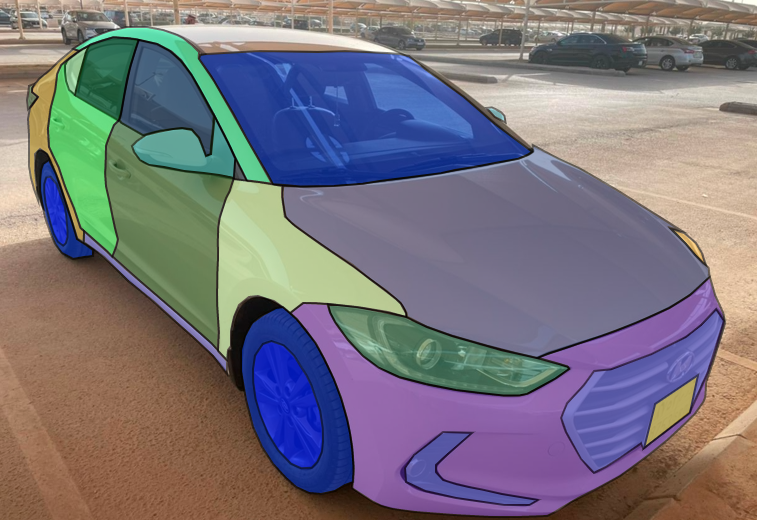A car damage inspection is a time-consuming and manual process. Artificial intelligence can be adopted in the digital transformation process of damage assessment, for example, using a computer vision model, automated detection of damaged body parts can be done very quickly from severe wrecks to thin scratches, at scale.
More importantly, quick detection of different degrees of damaged car body parts would translate into better visibility and faster calculation of accurate estimation of repair cost – depending on which part of the car component got wrecked and how bad the damage is.
The Project
An insurance company was trying to optimize vehicle damage assessment for insurance claims processing using an AI model. The goal was to accelerate the inspection process while ensuring high accuracy of repair cost estimation, aimed to improve productivity and customer satisfaction.
Building a proper dataset itself to train the AI model is a challenge in itself as currently there is no publicly available dataset of broken or damaged cars. Therefore, the company had to build its very own dataset that needed to be extensive in terms of different types of cars, types of body parts within the car, and also different types of damage along with varying degrees of severity.
Ensuring the quality of the dataset was of paramount importance because misattribution of car parts or assigning the wrong type of damage would result in a miscalculation of damage costs.
HAIVO contributed to enriching the AI damage assessment model with high-quality image datasets performed on the Taqadam platform. It was critical to accurately annotate the car body parts, as well as to correctly classify the car part and the type of damage. The annotators were trained to identify up to 40 different car parts. The quality of the dataset was achieved via rigorous training by HAIVO Project Managers as well as vigilant validators, applying 100% QA and spot checks to ensure quality and consistency across the annotations.
https://kili-technology.com/transforming-car-damage-assessment-in-auto-insurance-claim-process/



